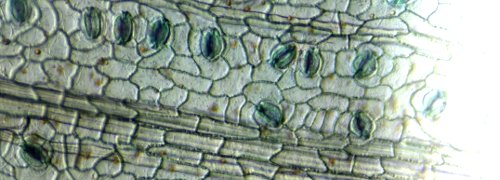Although the upper limit of orchard dry matter production is set by light interception as outlined above, crop composition is determined by sunlight distribution within the canopy, and shade can reduce fruit quality. This is a general phenomenon among perennial fruit crops and has been reported for apple, citrus, peach, cherry, kiwifruit and raspberry. In apple, for example, fruit from more shaded regions are smaller, and have less red colour and lower soluble solids. There are also effects on apple quality after storage, with shaded fruit of Cox’s Orange Pippin tending to suffer more from shrivel and core flush and less from bitter pit than fruit from well-exposed regions of the tree. Fruit of satsuma mandarins grown in shaded regions of the trees are smaller, with a higher acid content and lower sugar content than fruit grown in well-exposed parts of the canopy.
With both peaches and cherries, shading has been found to reduce fruit colour, soluble solids and fruit size and delay abscission and maturity. Kiwifruit from shaded regions of the canopy, or individual fruit which has been artificially shaded during the season, show reduced fruit fresh weight, soluble solids, firmness and chlorophyll concentration in the mesocarp compared to well-exposed fruit. With grapevines, too, shaded fruit have generally lower sugar, total phenol and anthocyanin but higher pH, malate, potassium and titratable acidity than fruit grown in well-exposed positions in the canopy. These differences in grape quality have carried through to the wine quality made from the grapes. A consequence of decreased sugar levels in shaded grapes is a delay in harvesting. This may put crops at risk in climatically marginal regions.
Generalisations on sunlight and fruit quality have been derived from shading experiments on whole trees or parts of trees, or from correlation studies of fruit quality and irradiance in different parts of the canopy. Consequently both fruit and foliage have been subjected to reduced light, but some features in grapes and apples, such as anthocyanin development, vary according to illumination of the fruit itself. With grapes, cluster shading reduces fruit anthocyanin and total soluble phenolics, while leaf shading results in smaller berries with lower glucose and fructose content.
Shade within orchard trees can arise from self-shading or from adjacent trees or shelterbelts. Light levels in midsummer within well-spaced, traditionally pruned large peach trees can drop to 4–15% of incoming radiation. Sour cherry trees tend to be more dense, and light levels as low as 2–4% have been reported. Vigorous grape canopies can be very dense, with irradiance within the canopy reduced to less than 1% of ambient. With such dense canopies, between-row shading will be unacceptable if the ratio between canopy height and clear alleyway spacing exceeds 1:1 (Smart 1989). With the much more open canopies of apples, such ratios may be less useful, as acceptable light distribution within the trees can be obtained over a wide range of ratios of canopy height to clear alleyway spacing. With apple canopies, a ratio between actual light interception and \(F_\mathrm{max}\) may be more useful. If this ratio exceeds 0.7 then self-shading is probably excessive.
Overall effects of shade on fruit quality are very clear, but processes responsible are not so clear. Shade reduces PAR and, therefore, local photosynthetic activity; but canopy shade also reduces temperature (Greer and Weedon 2012) and changes wavelength distribution of transmitted light. Leaves absorb strongly in the visible part of the spectrum (400–700 nm), but have a high transmittance and reflectance to wavelengths in the near infrared (see Figure 12.1 at start of this chapter). This difference in light quality between incident and transmitted sunlight is usually expressed as a red/far-red ratio, that is, a ratio between irradiance around 660 nm compared with 730 nm wavebands. These wavebands correspond to peaks of absorption by phytochrome (Chapter 8), and are strongly implicated in developmental responses to canopy shade. Correlated changes in irradiance and the red/far-red ratio of canopy light make it difficult to separate the effects of changing irradiance from the effects of a change in the red/ far-red ratio, but it is likely that changes in berry composition are due to combined effects of irradiance and red/far-red ratio.
